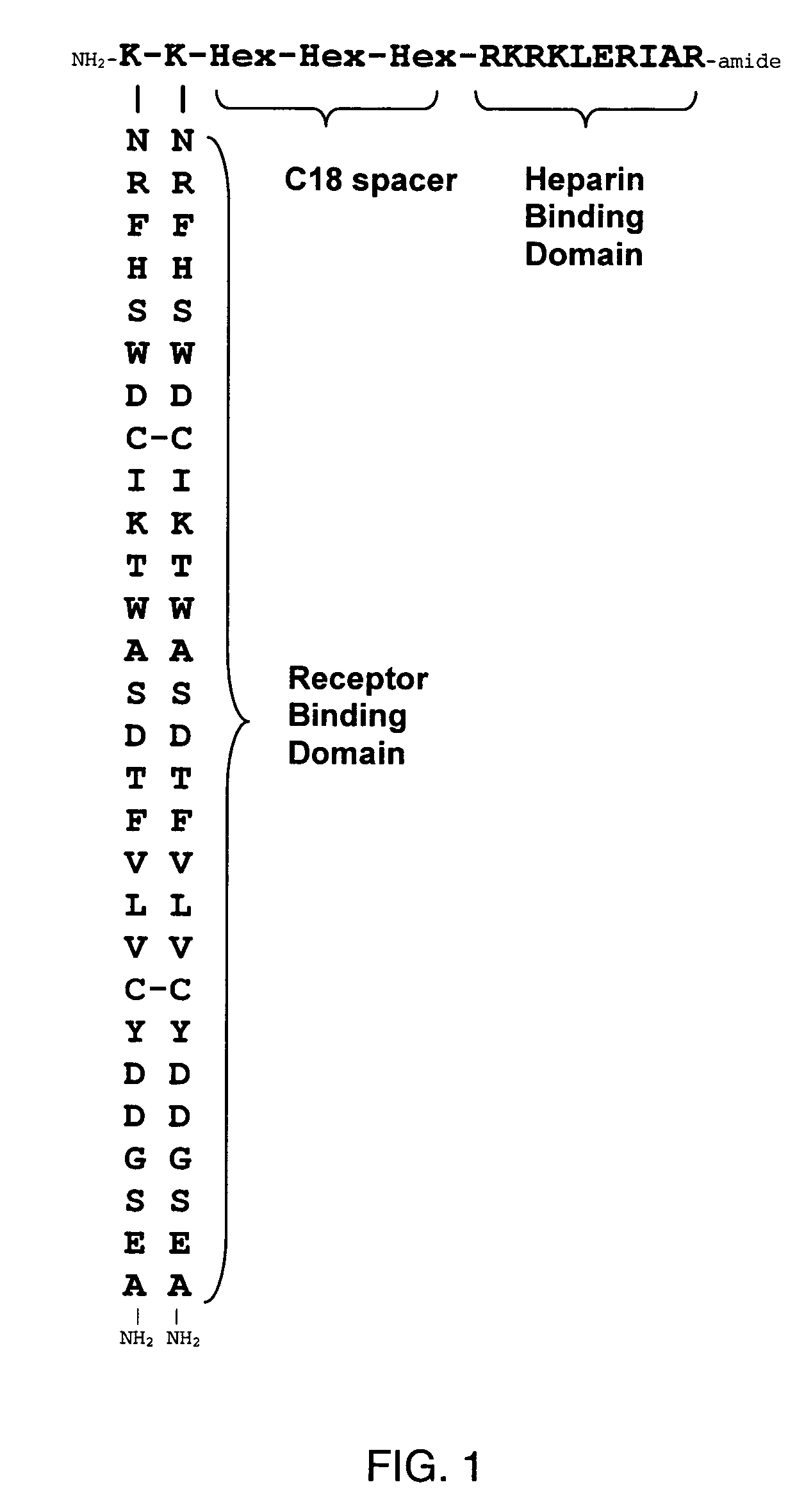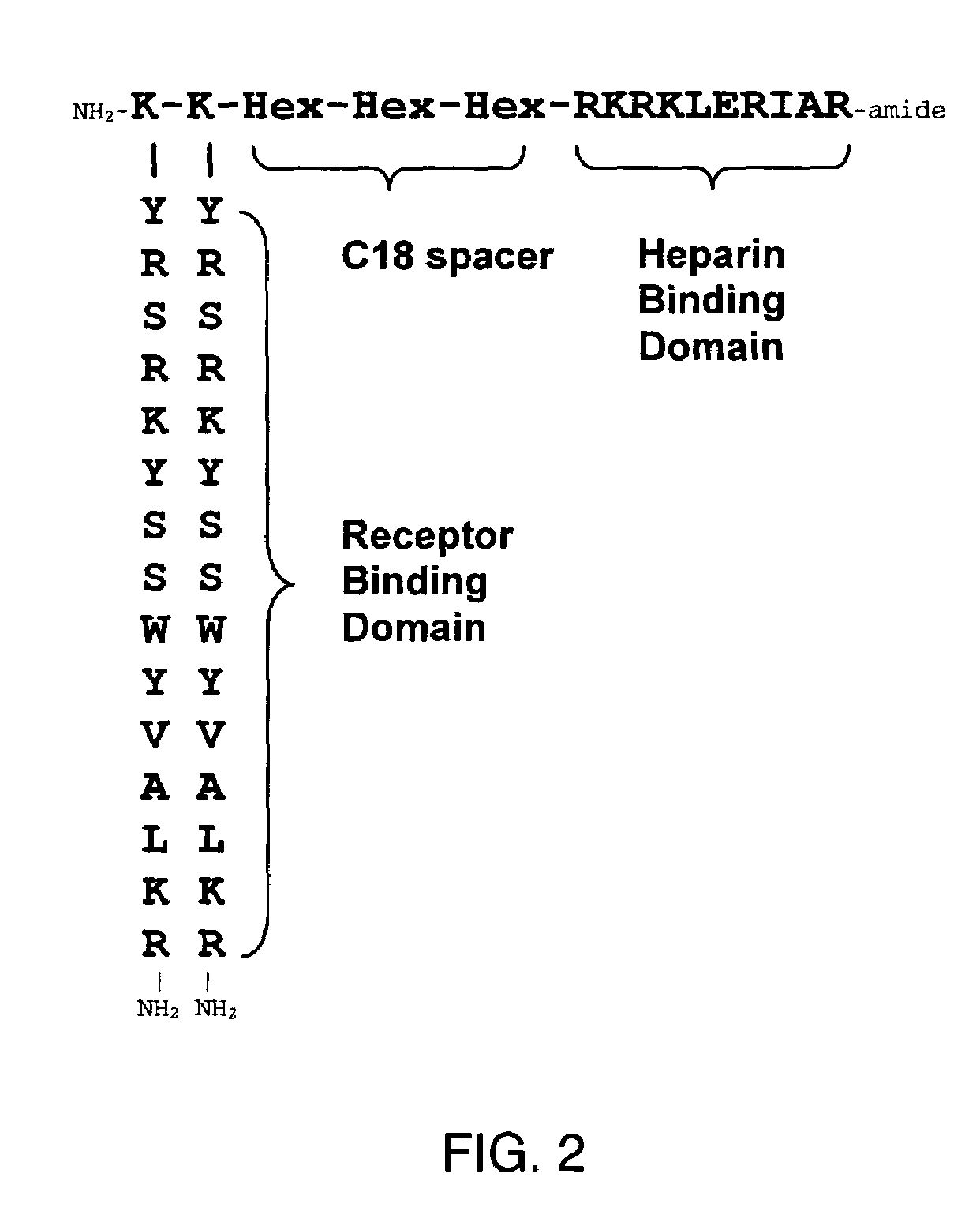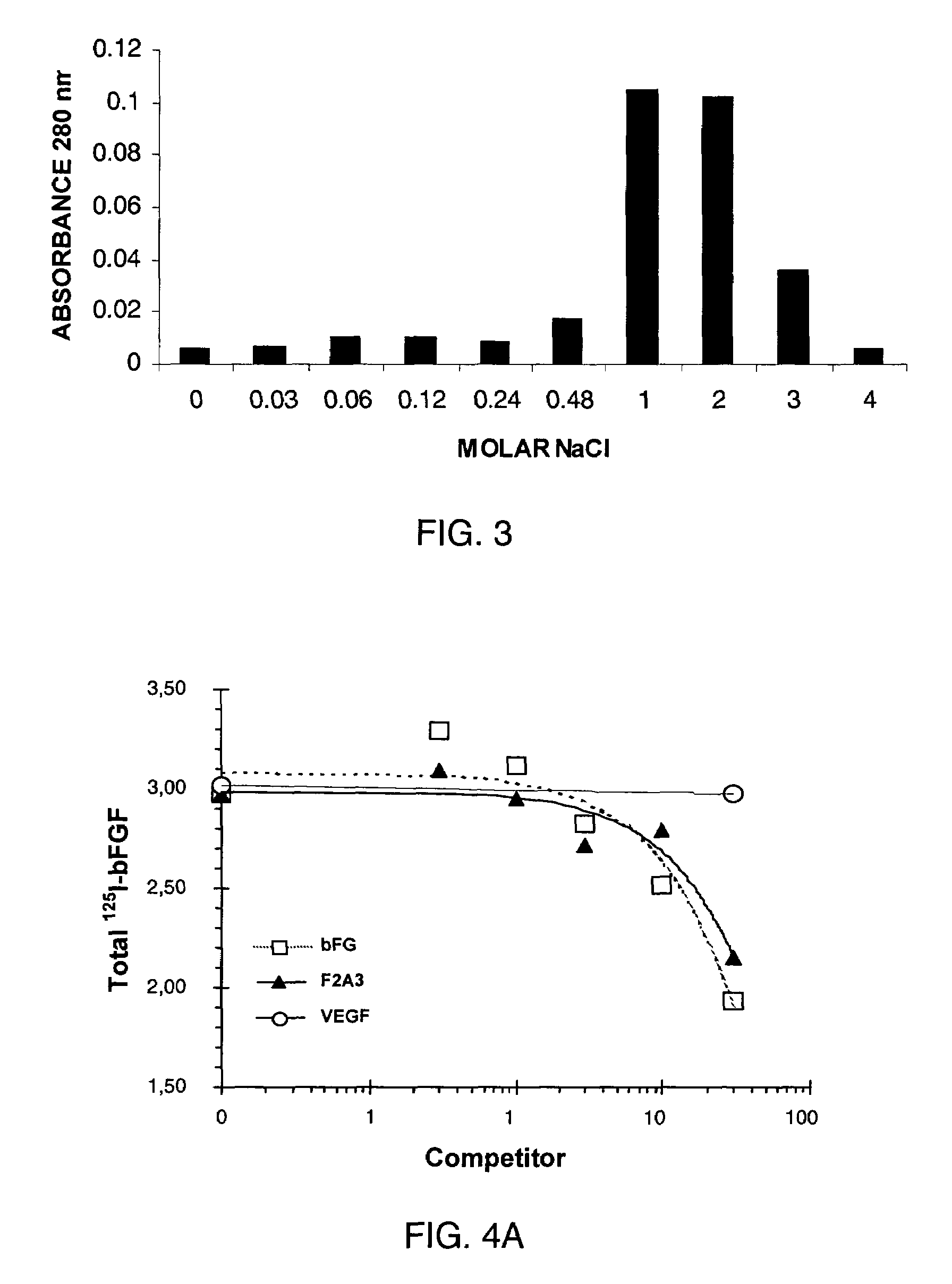Synthetic heparin-binding factor analogs
a technology of growth factor and analogs, which is applied in the field of synthetic peptides and analogs of heparin-binding growth factor, can solve the problems of high preparation cost, general difficulty in preparation, and no known heparin-binding growth factor analogs provide the advantages, and achieve the effect of reducing the harmful effects of radiation
- Summary
- Abstract
- Description
- Claims
- Application Information
AI Technical Summary
Benefits of technology
Problems solved by technology
Method used
Image
Examples
example 1
[0157]The synthetic HBGF analog, F2A3, the structure of which is shown in FIG. 1, was synthesized by standard solid phase peptide synthesis methods. F2A3 has a structure according to formula II, in which the amino acid sequences of the X region, NRFHSWDCIKTWASDTFVLVCYDDGSEA (SEQ ID NO:7), corresponds to the C19 peptide sequence identified by Ballinger et al. (Nature Biotechnology 17:1199 (1999)). Each of the two X region peptides of SEQ ID NO:7 are covalently linked by amide bonds to a lysine residue, the lysine residues corresponding to J1 and J2. The J2 Lys is bound by means of a covalent peptide bond to one terminus of a tripeptide formed from three aminohexanoic acid residues and corresponding to linker Y, providing a hydrophobic space of 18 alkyl carbon atoms. The opposite terminus of the aminohexanoic acid tripeptide is covalently bound by a peptide bond to heparin-binding peptide RKRKLERIAR (SEQ ID NO:2) corresponding to region Z.
[0158]The peptides were assembled stepwise by ...
example 2
[0160]The synthetic HBGF analog, F2A4, as shown in FIG. 2, was synthesized by standard solid phase peptide synthesis methods. The amino acid sequences of F2A4 corresponding to regions Y and Z of formula II are identical to those of F2A3 described in Example 1. The amino acid sequence YRSRKYSSWYVALKR (SEQ ID NO:6) of the two X region peptides correspond to amino acids 115-129 of FGF-2 identified by Ray et al. (Proc. Natl. Acad. Sci. USA 94:7047-7052, 1997).
[0161]The crude preparation was purified as described above in Example 1.
example 3
[0162]FIG. 3 shows the elution profile of F2A3 from a heparin affinity column. Mini columns were prepared with 0.5 mL heparin-agarose and washed extensively with water. F2A3 was loaded onto the column and rinsed with water. F2A3 was eluted from the column by stepwise increasing concentrations of NaCl as shown.
PUM
| Property | Measurement | Unit |
|---|---|---|
| pH | aaaaa | aaaaa |
| final volume | aaaaa | aaaaa |
| concentration | aaaaa | aaaaa |
Abstract
Description
Claims
Application Information
 Login to View More
Login to View More - R&D
- Intellectual Property
- Life Sciences
- Materials
- Tech Scout
- Unparalleled Data Quality
- Higher Quality Content
- 60% Fewer Hallucinations
Browse by: Latest US Patents, China's latest patents, Technical Efficacy Thesaurus, Application Domain, Technology Topic, Popular Technical Reports.
© 2025 PatSnap. All rights reserved.Legal|Privacy policy|Modern Slavery Act Transparency Statement|Sitemap|About US| Contact US: help@patsnap.com



